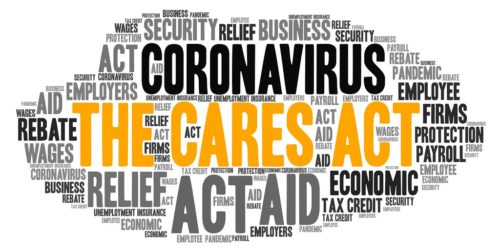Originally published on Forbes.com.
According to a report in the Washington Post earlier this month, the bulk of the second largest tax cut in the CARES Act ($170 billion) stood to be shared among about 43,000 returns. The Joint Committee on Taxation has backpedaled a little indicating that the total cost was “only” $135 billion, but the essence remains.
Senator Sheldon Whitehouse (D-RI) and others have introduced legislation to reverse the controversial provision, a rollback of a limitation on excess business losses. The part of the announcement that is most interesting is this:
“Only after the Senate had already voted on the CARES Act did the full cost of the Republican provisions become clear.”
The implication is that the legislation was voted on before it was scored by the Joint Committee on Taxation. “Think fast. Make mistakes” is what we used to say at Joseph B Cohan and Associates.
Chris Fleming of Americans For Tax Fairness wrote me:
Senate voted March 25th. JCT initial score is March 26th . House voted March 27th. President signed March 27th. JCT releases first year distributional analysis of CARES Act section 2304 April 9th.
It Was Hard To Catch
A really on-the-ball staffer might have caught this and gotten a Congressman to raise it by looking at the scoring of the enactment of the excess business loss provision, but even that would not have been quite as obvious. The projected revenue gain from 461(l) was not nearly as concentrated as the high cost of its suspension implies.
Not to give myself too much credit, but I noticed the provision and its significance a month ago. I have to admit that Jesse Drucker of the New York TimesNYT caught it a day before, but that piece contains some Trump bashing that is not very well supported. NYT tax coverage is not nearly as good as the obituaries and the book reviews, which are superb.
Cui Bono?
I thought it would be good to put a face of sorts on who benefits from the provision, but it is so obscure that I didn’t know anybody who knew anybody who actually dealt with it. Then last week I was able to interview Terry who runs a family office for Robin. Robin is one of the lucky 43,000. (Not their real names, of course).
Terry is an accountant with a background in real estate taxation, who prepares the workpapers for and reviews Robin’s 1040 which is prepared by a national firm. Terry has a fascination with President Trump’s tax situation, because it has similarities to Robin’s, although Robin’s life is simpler than our President’s.
There was big break for Robin in TCJA. Bonus depreciation was extended to used property. Robin owns numerous properties of various sorts all over the country. Now when Robin buys a property a significant percentage of the cost can be immediately expensed. For example on a strip mall, it could be reasonable to allocate 15% to the parking lot pavement.
Robin also believes in leverage. At least until the current crisis a bank would loan 70% to 80% non-recourse on the sorts of property Robin preferred. With cross-collateral, it can be 100%. So as long as Robin is buying the real estate portfolio can be producing negative taxable income while still appreciating and providing cash flow. (A very wise man, who is not big on leverage, once told me that leverage makes whatever is going to happen happen faster.)
Since Robin spends a lot of time on the real estate, Robin does not have to worry about the passive activity loss rules. The limit on excess business losses is a different story. Robin had some large non-business income. Think of it as the art collection being sold. I just made that up, but tax-wise what happened is not much different.
That is what made 461(l) so painful for Robin. Only $500,000 of real estate losses could be used to shelter that gain, which was in the millions. The provision in the CARES Act fixes that retroactively.
Did President Trump Benefit?
One of Terry’s fascinating theories is that President Trump turns down his salary so that he can continue to be treated as being a real estate professional. Terry also thinks that the President’s switch to Florida residence (which I predicted-not bragging, just saying) was motivated by the state income tax headaches that 461(l) has indirectly created for people with enterprises of his complexity.
I think the real estate professional theory is a real stretch. The requirement is that you spend 750 hours on your real estate trade or businesses and that be at least half the time you spend on “personal services”. There is a lot of case law on the numerator of that fraction but I can’t find much on the denominator, which Terry’s theory hinges on.
If, as I think is likely, any net negative of the Trump Organization would be suspended by the passive activity loss rules, the suspension of 461(l) would be of no significance to our President. Maybe he will release some tax returns to show that. I sure hope he does not, as I would feel obligated to study them. It would make for some great conversations with Terry, though.
Another View
Joe Kristan, one of the pillars of the tax blogosphere, thinks that 461(l) is really bad tax policy and that its repeal would be even better than its suspension. He has promised to provide me some real-life examples perhaps more sympathetic than Robin.
I also don’t think 461(l) was such a great idea, but it was passed as part of TCJA to offset tax cuts in other areas. Its suspension does not belong as part of the pandemic response given the narrow not so needy demographic that is subject to it.































































































